02/06/2024 16:00 Weather news
It will still be cold at night, so please warm up and enjoy stargazing.
The waning Moon, Venus and Mars are approaching
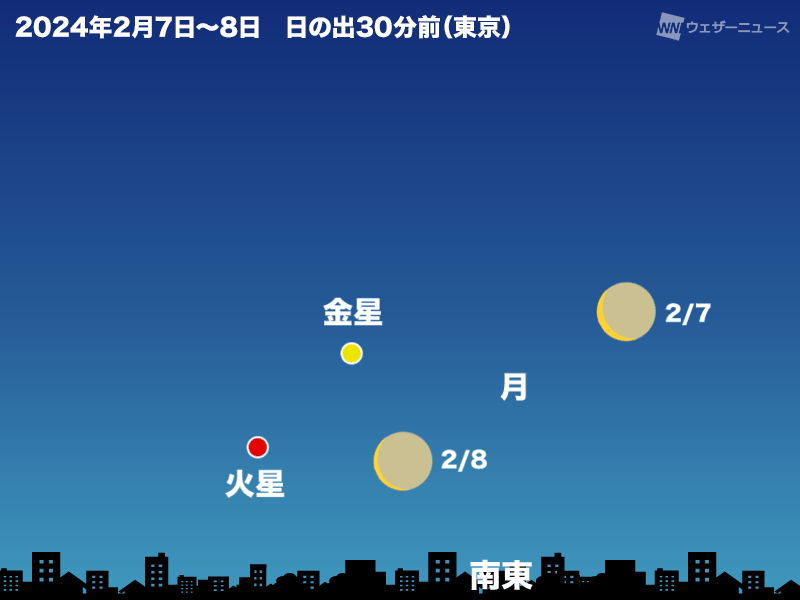
Mars is dimmer than Venus and has a brightness of about 1.2 mg, so it is expected to be difficult to see with the naked eye in the morning sky. Observation using an endoscope is recommended.
At dawn on February 8 (Thursday), the slender moon will approach the planets Venus and Mars. It can be seen from a low elevation, so please enjoy it from an open area to the southeast.
▼ Sunrise time on 8 (Thursday) (Tokyo)
Moon 5:26 Venus 4:57 Mars 5:27 Sunday 6:36
Venus and Mars are very close
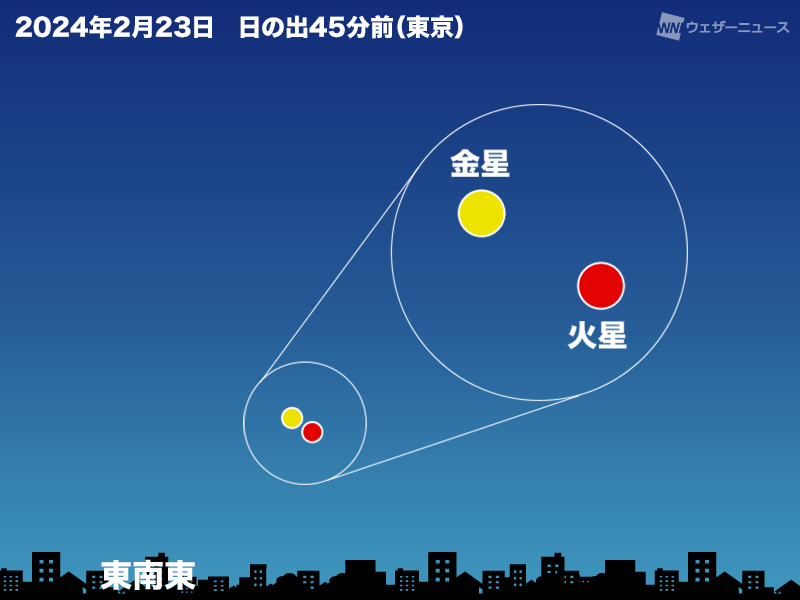
Even 45 minutes before sunrise, the elevation is only about 5 degrees, so enjoy the close proximity of Venus and Mars from an open area to the east and southeast.
Venus shines brightly, but Mars is not very bright, so we recommend observing it with binoculars.
▼ Sunrise time on Friday the 23rd (Tokyo)
Venus 5:06 Mars 5:08 Sunday 6:20
The moon and Jupiter are close
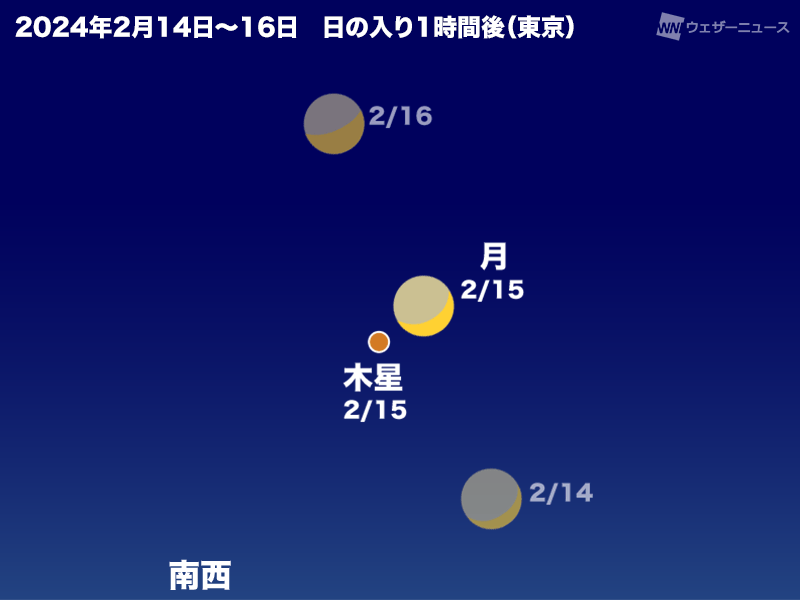
The moon will approach Jupiter on February 15 (Thursday). The conjunction of the Moon and Jupiter, which have a strong presence even in the night sky, is a sight to behold.
▼ Sunset time on the 15th (Thursday) (Tokyo)
Jupiter 23:12 Monday 23:35
The full moon will be farthest from Earth in 2024
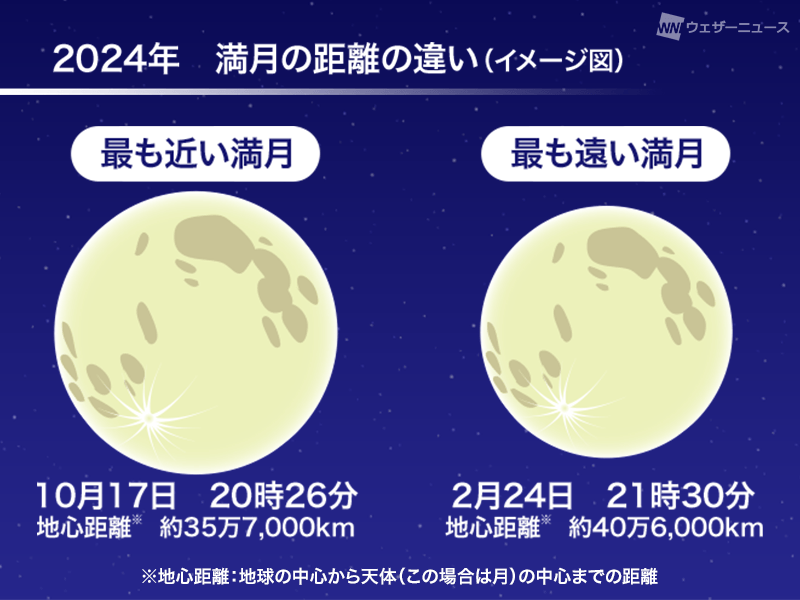
The Moon's orbit around the Earth is elliptical, and the Moon's orbit changes due to the gravitational forces of the Sun and Earth. For this reason, the distance between the Earth and the Moon varies every time during a full moon or new moon.
The moon will be full at around 21:30 on the 24th (Saturday), and will exceed its apogee (the furthest point from Earth) at 23:59 on the following day, the 25th (Sunday). When the Moon is full, the geocentric distance (the distance between the center of the Earth and the center of the celestial body) is approximately 406,000 km, and the apparent diameter of the Moon (the apparent size of the celestial body expressed in degrees) is approximately 29 minutes and 26 arcseconds.
Compared to the full moon closest to Earth in 2024 (October 17), the apparent diameter will be about 12% smaller (the area will be about 22%) smaller.
February's full moon, “snow moon” in English
According to The Old Farmer's Almanac, the full moon in February is called the “Snow Moon” in the United States. The name comes from “the season when it is very cold and a large part of the land is covered with snow.”
Source/reference
National Astronomical Observatory of Japan “Information about the Starry Sky” https://www.nao.ac.jp/astro/sky/
National Astronomical Observatory “Koyomi Computing Laboratory” https://eco.mtk.nao.ac.jp/koyomi/
Astro Arts “Starry Sky Guide” https://www.astroarts.co.jp/
Old Farmers' Almanac

“Travel maven. Beer expert. Subtly charming alcohol fan. Internet junkie. Avid bacon scholar.”







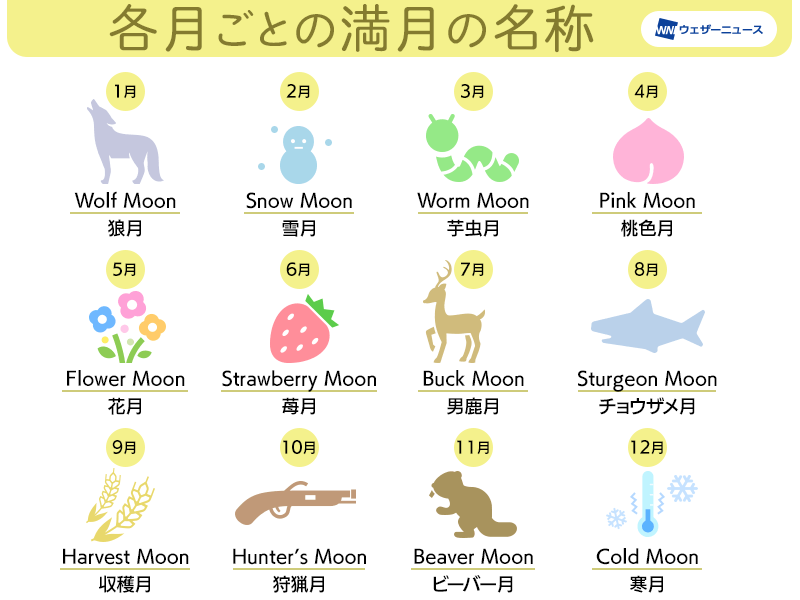

More Stories
The ranking of the best survival horror games selected by the IGN US editorial team has been released! Resident Evil RE:2 ranked first
Enjoy a hot cigarette while looking at whales and tropical fish under the sea ⁉︎ “Ploom Dive” is an amazing spatial video experience using Apple Vision Pro
Apple Watch now supports sleep apnea, watchOS 11 released – Impress Watch